Archive for ‘Planning’ Category
Back-to-School Organizing News You Can Use: 3 Solutions to Save Time, Money, and Serenity
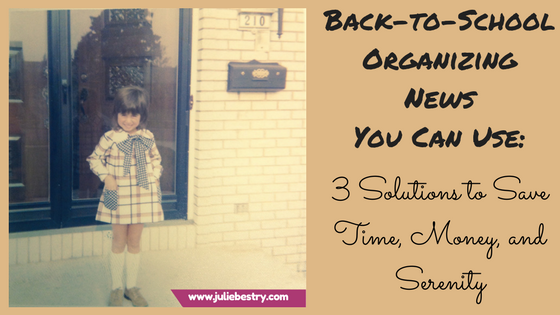
Wait, it was just Independence Day! Why are we talking about back-to-school organizing? In ye olden days, when I grew up in Buffalo, New York, where kids still don’t go back to school until after Labor Day, talking about back-to-school so soon after the 4th of July would be like stores putting up Christmas decorations right after Halloween. (Oh…right.)
But there’s a method to the madness. In many parts of the country, students go back to school in the middle of the summer. In my county in Tennessee, the public schools start on August 3rd, and mere miles from me in Georgia, students go back on the first of August. But even for kids going back to school in September, that’s only about eight weeks from now. Instead of rushing to get everything done, here’s a roundup of ways to organize your approach to the back-to-school season.
ORGANIZE YOUR ADHD STUDENT – FREE WEBINAR
Paper Doll‘s colleagues (and longtime friends), Michelle Cooper and Michelle Grey of Student Organizers of Atlanta will be presenting a free, live webinar entitled Practical Organization and Time Management Strategies for Middle and High Schoolers with ADHD on July 20, 2017, at 1 p.m. ET.

Presented as part of ADDitude Magazine‘s ongoing webinar series, the webinar will provide strategies for:
- Managing the day-to-day organizational challenges facing students both inside and outside of the classroom
- Understanding your child’s “thinking style” and finding organizing methods and tools that fit his or her style
- Using organizational systems that will improve his or her chances of academic success
- Collaborating with your child and the teachers to support his or her efforts at organization
- Using products, books, and websites to ease the process of organization for your student
Register for the webinar and take it live, or you can use the replay link to watch (or rewatch) the webinar for free, any time up through next January 20, 2018.
Learn more about ADDitude and check out the other webinars in the series. If your child is heading to college, both of you might want to watch the webinar on July 11, 2017, entitled The College Transition Guide for Teens with ADHD.
ORGANIZE YOUR FINANCES – TAX-FREE HOLIDAYS
Over the four weekends from July 21 through August 13, sixteen states will be having tax-free holiday weekends. In general, these states allow retailers to sell clothing and footwear, school supplies, computers, and sometimes backpacks, books, and other “tangible personal property” without charging sales tax. In my state, that’s a savings of 9.25%. Combine that with various 10%-25%-off sales, and that’s a great opportunity to stock up on necessities.
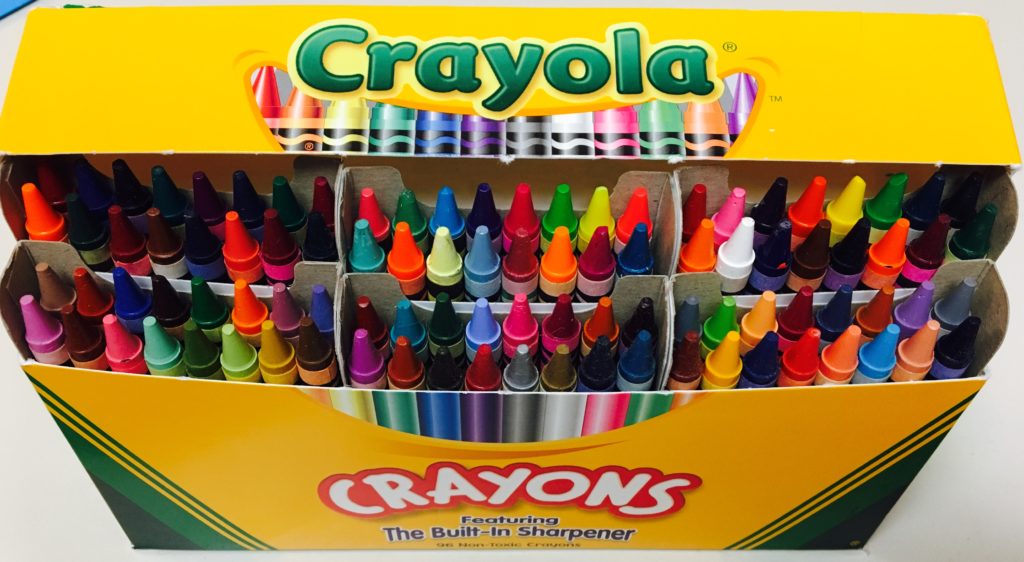
Note: Some states, such as Georgia, have discontinued their tax-free holidays, so be sure to check out states adjacent to yours.
Click on the name of your nearest state to be directed to that state’s official tax-free holiday page.
Alabama (July 21-23, 2017)
Tax-free: Clothing (up to $100), Computers (up to $750), School supplies (up to $50), Books (up to $30)
Arkansas (August 5-6, 2017)
Tax-free: Clothing and footwear (up to $100), Clothing accessories and equipment (up to $50), School and academic art supplies (no dollar limit)
Connecticut (August 20-26, 2017)
Tax-free: Clothing and footwear (up to $100)
Florida (August 4-6, 2017)
Tax-free: Clothing, footwear, wallets, and bags (up to $60), School supplies (up to $15/item), Computers (up to $750)
Iowa (August 4-5, 2017)
Tax-free: Clothing and footwear (up to $100)
Louisiana (August 4-5, 2017)
Tax-free: Tangible Personal Property (3% tax rate up to $2,500; a 2% state sales tax exemption applies, so qualified purchases are subject to only 3% state sales tax)
Maryland (August 13-19, 2017)
Tax-free: Clothing & footwear (up to $100)
Mississippi (July 28-29, 2017)
Tax-free: Clothing & footwear (up to $100)
Missouri (August 4-6, 2017)
Tax-free: Clothing (up to $100), Computers/peripherals (up to $1,500), Software (up to $350), Graphing calculators (up to $150), School supplies (up to $50)
New Mexico (August 4-6, 2017)
Tax-free: Clothing and footwear (up to $100), Computers, tablets, and e-readers (up to $1,000), Computer equipment (up to $500), Book bags and backpacks (up to $100 per item), maps and globes (up to $100 per item), Calculators (up to $200), School supplies (up to $30)
Ohio (August 4-6, 2017)
Tax-free: Clothing (up to $75), School supplies (up to $20)
Oklahoma (August 4-6, 2017)
Tax-free: Clothing and footwear (up to $100)
South Carolina (August 4-6, 2017)
Tax-free: Clothing (no limit) School supplies (no limit), Computers, printers, peripherals, and software (no limit)
Tennessee (July 28-30, 2017)
Tax-free: Clothing (up to $100), School and art supplies (up to $100), Computers (up to $1,500)
Texas (August 11-13, 2017)
Tax-free: Clothing, backpacks and school supplies (up to $100)
Virginia (August 4-6, 2017)
Tax-free: Clothing (up to $100), School supplies (up to $20), Energy Star products (up to $2,500) and a variety of hurricane-preparedness items.
Tax-free holiday tips:
- The price limits generally refer to the price-per-item cost, not your entire purchase. However, if a store is placing limits on entire purchases and you have a large family, you might want to have your older, more responsible children stand in line and pay with cash.
- Make a list of what each child needs before you get to the store. (Check with your school to see if a grade-appropriate list has been posted online.) It’s tempting to buy anything that seems like a bargain, but acquiring what you don’t need just because it’s a “deal” is the fast track to clutter.
- Set a budget for each shopping category.
- Shopping with smaller children will stress you (and your kids) out, so consider trading shopping and babysitting time with a friend or split babysitter costs while you and your friend hunt for bargains together. Let older children participate – use it as an opportunity to practice math skills (“How much is this shirt if it’s marked as 15% off?”) and encourage them in finding good deals on high-quality products. The more responsible they are, consider rewarding them with the amount by which they came in under budget to apply toward something fun.
- Remember to keep your receipts in case you find that you need to return something; note each retailer’s return policy.
ORGANIZE YOUR STUDENT’S SCHEDULE – A NEW KIND OF PLANNER
As mentioned a few weeks back when I was talking about Time Timer, many people, especially students, can have trouble mastering the concept of the passing of time, which makes it difficult to properly plan academic and life tasks. When I was in middle and high school, almost nobody used a planner or a calendar. These were the days when Trapper Keepers were the height of organizational technology and pocket-sized assignment notebooks yielded the best option for academic time management. Somewhere during the <mumble mumble> intervening decades, schools started providing and/or requiring student planners to help keep up with homework assignments, projects, and tests.
These planners give students the opportunity to mark down what they must do. It’s not clear, however, that students get the time management skills and system-training they need to master the intricacies of juggling academics, extracurriculars, part-time jobs, and familial obligations, or learn when to complete it all. That’s where Leslie Josel comes in.
Professional organizer Leslie Josel of Order Out of Chaos, is not just a colleague and friend; she’s also a fellow Cornell University alum, so when I first heard about her product line for students, I paid particular attention.

Paper Doll with Leslie Josel, © 2017 Best Results Organizing
At first, Leslie’s organizing practice concentrated on working with chronically disorganized clients, people with ADHD, students with learning challenges, and clients with hoarding behaviors. Eventually, (like Michelle and Michelle, above), she expanded her offerings to include coaching services for both students and parents. In 2016, Leslie expanded her company’s product division and officially launched Products Designed With Students in Mind.
Leslie’s big idea was the Academic Planner: A Tool for Time Management®. The 2017-2018 Academic Planner comes in two sizes: letter-sized (8 1/2″ x 11″) and personal-sized (8 1/4″ x 8 1/2″), both for $18.99. Based on an academic year calendar, the planners run July through June. They’re spiral bound, but also three-hole punched to allow students to pop them right into their binders.
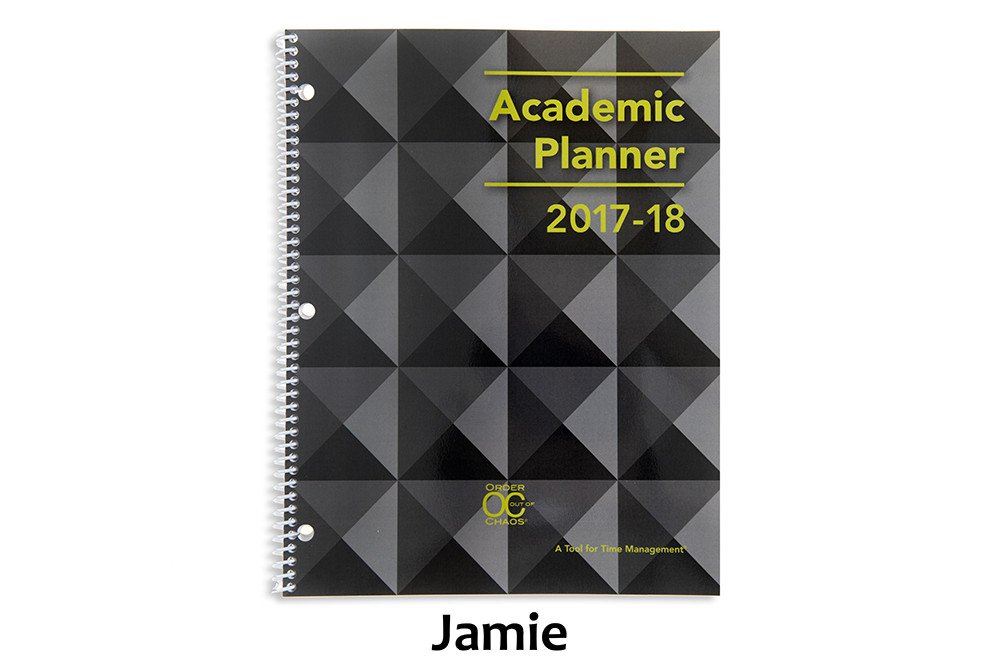
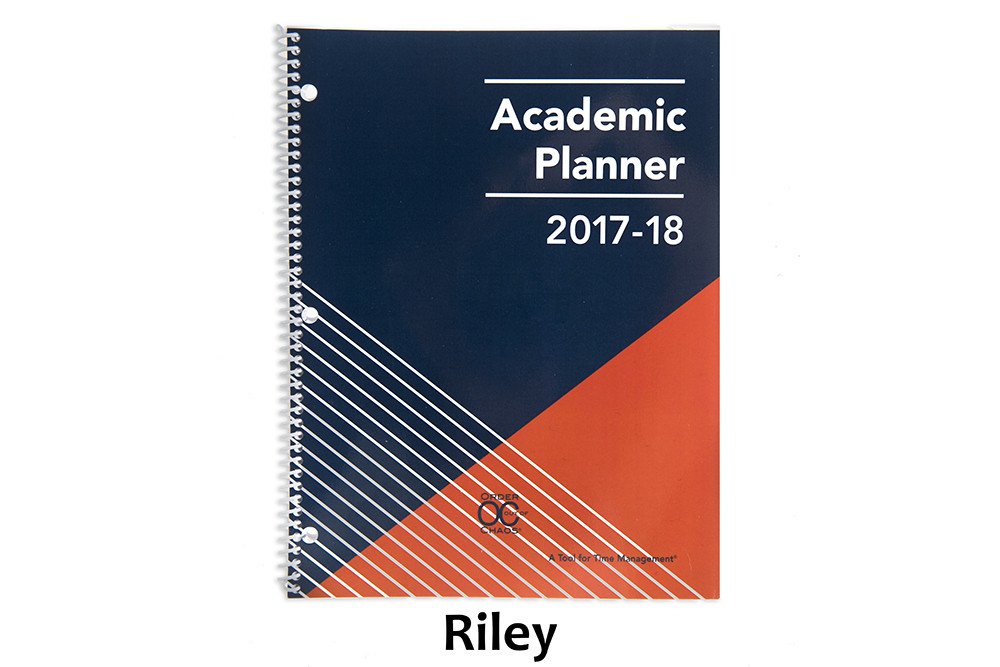
Each size is available in four styles of planners: Jamie (black), Riley (orange/blue), Taylor (white) and Paper Doll‘s personal favorite, Violet (pink/purple). The interior pages measure 7” x 11”, offering up more than the typical space for writing down assignments and activities.

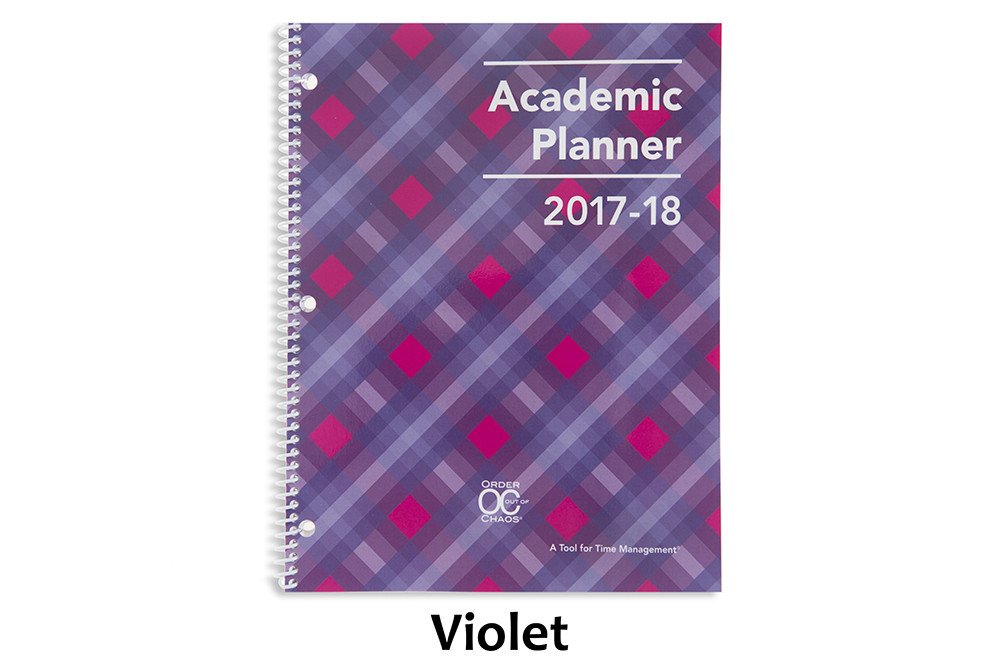
Introductory Pages
The front pages, measuring the same size as the front and rear cover of the planner, include:
- a contact information section so a lost planner can be easily returned
- a class schedule (subject, period, instructor, room #, days) to quickly acclimate students for the new year (and give a fellow student, armed with the contact info, an easy way to find the owner at the right classroom and return a lost planner)
- a Welcome Letter from Leslie to parents
- a detailed set of Planner Pointers, providing excellent guiding tips for making smart use of the planner. (My favorite? Writing “No Homework” if none was assigned so the student never has to wonder if he or she just forgot to write something down.)
- a two-page Planner Use Guide, showing the planner in action — noting assignments, reminders (“Get permission slips signed!”), after-school activities and previews for the next week
- Homework Helpers, tips that could only come from a professional organizer experienced with helping students gain control of their work.
- a sample Project Planning Guide to help plan long-term assignments (Students can download more guides for future projects.)
- a two-page School Year at a Glance
Planner Pages
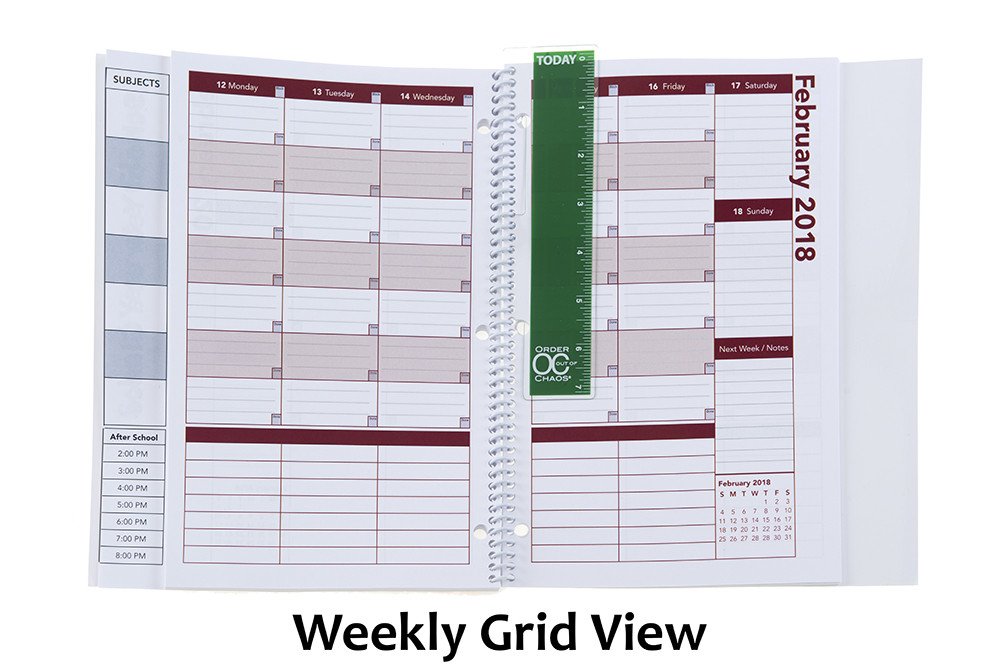
On the last (extra-sturdy) full-sized front page, the Academic Planner has a vertical index page that peeks out from behind (and to the left) of the actual planner pages. This index page means that students record their class subjects (in up to 7 subject boxes) only once. Then everything on the upper calendar sections of the planner pages lines up with the appropriate class subjects, course by course, horizontally (with days of the week arrayed, vertically) across a two-page layout. (You can download a sample planner page.)
The next row (in the personal-sized planner, only) is for To Do items.
Below that, there’s an hour-by-hour schedule from 8 a.m. until 8 p.m. Typical student planners only cover the academic day and don’t take into account post-school activities, like doctor’s appointments, tutoring, clubs, rehearsals, sports, and jobs. This planner provides oodles of space for all of those activities and recognizing conflicts (just like in the best calendar planners for adults). This really helps students see the forest and the trees of weekly time management.
Other Features
- At the start of each month, there’s a left-side full-page monthly calendar with space to note major events, holidays, and vacations, and adequately plan longer-term projects.
- The right-side Notes page facing the calendar offers up ample room for planning, notes, and the kinds of serious thoughts only people between 12 and 18 can understand.
- There’s a clear poly pocket at the rear of the planner for safely keeping notes, permission slips, and other documents too small for a student’s binder.
- A bonus Academic Planner Accessories Pack (sold separately, for $8.97) includes a plastic page marker that clips into the spiral binding, so it’s easy to find the current week in the planner, a set of monthly tabs, and a really bright, sunny set of useful stickers.
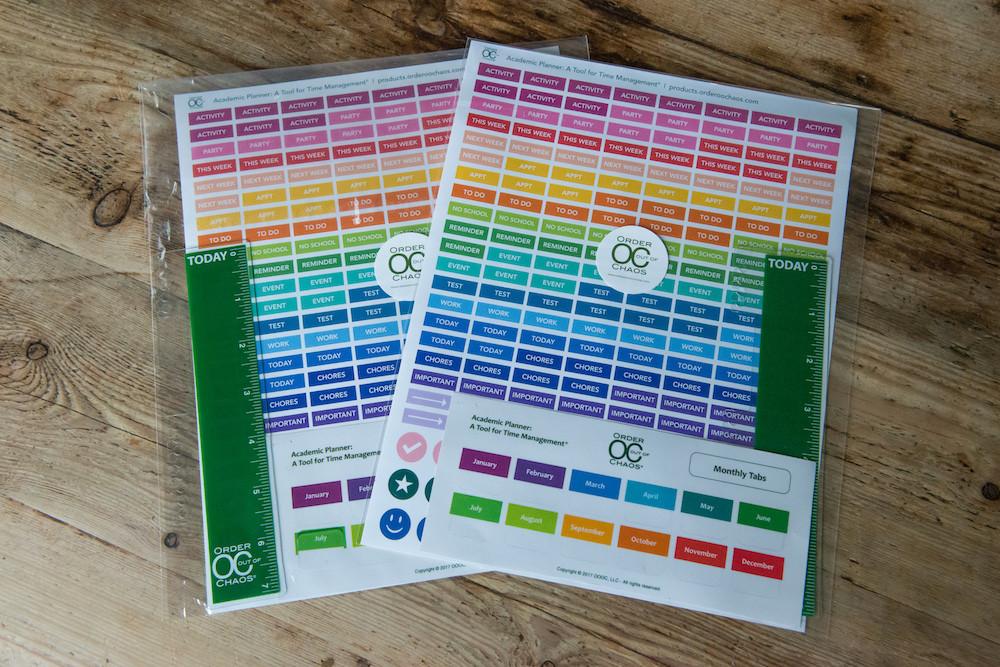
But of course, measurements, styles, and features don’t give credit to what the 2017-2018 Academic Planner: A Tool for Time Management® can actually do to help students. For that, let’s go to the video!
Enjoy your summer, but remember that a little organizing now can make back-to-school the most wonderful time of the year!
Disclosure: Some of the links above are affiliate links, and I may get a small remuneration (at no additional cost to you) if you make a purchase after clicking through to the resulting pages. The opinions, as always, are my own. (Seriously, who else would claim them?)
Organize Your Days With a Little Color
We’re a week into the new year, and while some of you have your calendars or planners fully updated with all of your recurring appointments and items scheduled long ago, others of you have been trying to make do with that 13th month in your calendar while you decide what to do next. And perhaps, part of that search is how to make your days a little more colorful?
Paper Doll doesn’t doodle. I’m not visually artistic. I didn’t like coloring when I was little, and honestly, trying to figure out whether two colors go together, or making sure I’m coloring inside the lines, is stress-producing for me. But from the coloring tables at NAPO2016 to Smead’s SuperTab® Coloring Folders, I see many of you have embraced coloring, and you’ve got some support from research in the mental health and neurological communities:
Why Coloring Relieves Stress (And Is A Perfect Activity for Introverts)
10 Therapeutic Benefits of Coloring Books for Adults
Drawing, Art Therapy, And Stress Relief: What Research Says About Drawing Pictures for Stress Relief
The Science Behind Adult Coloring Books Explains Why They’re So Therapeutic
Given all of this, it stands to reason that it’s the coloring, not the book, per se, that is the key to stress relief, so it’s interesting to see how coloring being incorporated into other activities, such as the aforementioned Smead Coloring Folders, can improve the organizing experience.
Tasks, schedules, and appointments often make people stressed, so it’s no surprise that some enterprising calendar and planner designers would find a way to blend the precision of scheduling with the freedom and stress-reliving properties of adult coloring books. Today, we’re going to look at a few that might tickle your coloring fancy while helping you organize your days.
Franklin Covey Living Color Planner
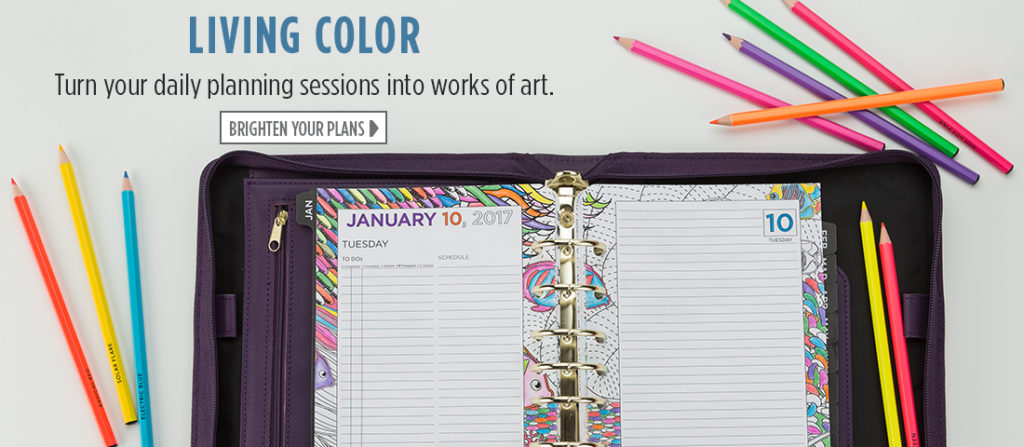
These ring-bound, two-page-a-day Franklin Covey pages come in Compact (4.25″ W x 6.75″ H x 0.5″ D) or Classic (5.50″ W x 8.50″ H x 0.5″ D), on 70# paper, with the monthly tabs included. They are available at Amazon in Classic and Compact for about $48 (for you Amazon Prime people) and directly from Franklin-Covey for about $44.
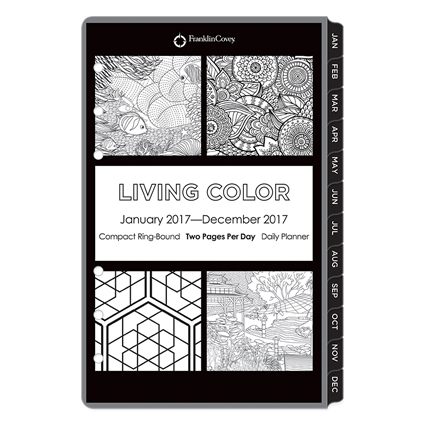
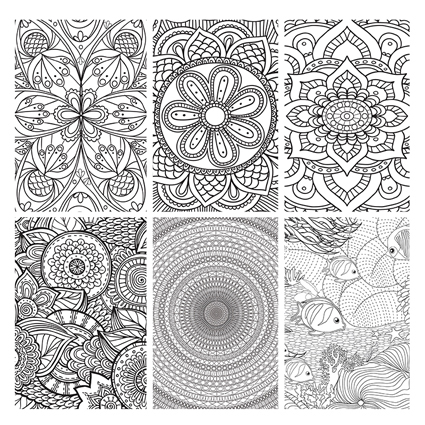 Of course, If you’ve already bought your ringed Franklin Planner for the year, don’t fret. Franklin-Covey has the coloring-loving early birds covered.
Of course, If you’ve already bought your ringed Franklin Planner for the year, don’t fret. Franklin-Covey has the coloring-loving early birds covered.
Franklin-Covey Coloring Page Packs
The coloring page packs, available directly from Franklin-Covey, come in two ring-bound sizes, Compact ($8) and Classic ($9), with a wide variety of black-and-white designs on the 32-sheet packs. The pages are printed on the same heavier, 70# paper as the Living Color Planner, but note that designs appear on only one side, while the reverse pages are blank.
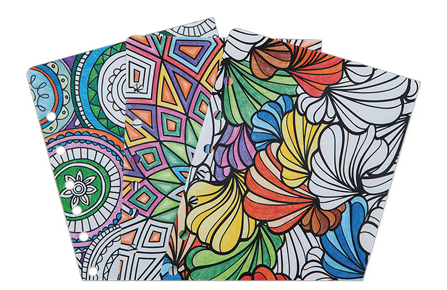
At-A-Glance FloraDoodle Premium Weekly/Monthly Planner
Mead’s At-A-Glance line includes a variety of delightful FloraDoodle-themed items, including pocket planners, wall and desk planners, and monthly/weekly planner in multiple sizes.
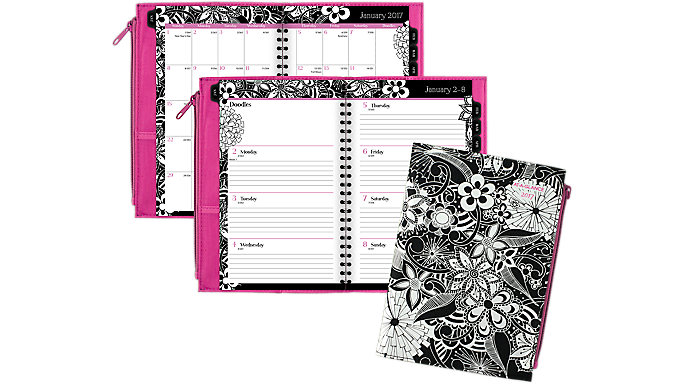
The wire-bound FloraDoodle planner has a flexible, pink, reusable (and removable) canvas cover with a zipper pocket for storage, and features a black and white design with a hand-drawn look. The individual page designs “feature white flowers on a black backdrop with a scribble look where flowers, petals, and squiggles lay overtop one another for a one of a kind pattern.”
Every page of the FloraDoodle planner displays black borders with a white flower pattern across the top for coloring. The two-page monthly pages are tabbed for easy navigation and include unruled daily blocks, as well as doodle space and past/future month reference calendars to manage upcoming events. The two-page per week weekly spreads provide an equal amount of ruled planning space for each day (Monday – Sunday) for recording daily tasks. Each weekly section begins with a blank space for doodling and drawing.
The FloraDoodle Weekly/Monthly Planner’s special pages include a holiday list, a three-year reference calendar, an overall event calendar, contact pages, note pages and planning pages for the following year.
Items from the FloraDoodle line are available directly from At-A-Glance, and at Staples, Shoplet, and other stationery vendors and at Target.com (but not in stores), and range from $7-29.
Color Drawing Schedule Academic Planners
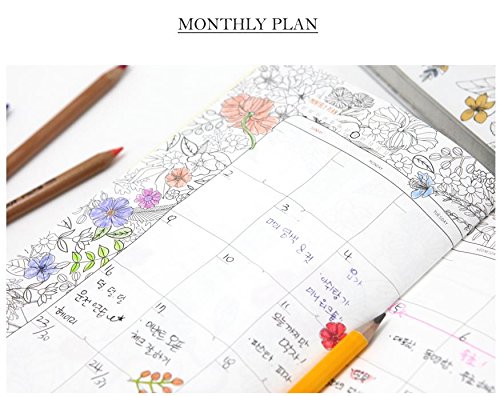
This academic planner is a little more loosey-goosey than the professional planners above, with un-dated pages so the user can begin at any point in time. Each coloring planner measures 5.1″ X 7.4″ and consist of monthly and weekly pages, accounting pages, a blank notes section and a checklist section for recording tasks.
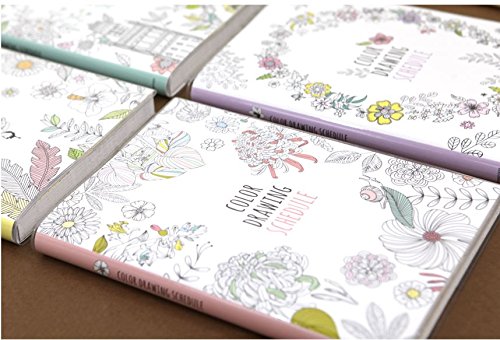
Each planner comes with a protective PVC cover to preserve durability, and two different coloring covers. (Note: While there are four different coloring cover versions, random coloring covers are shipped, so it is not possible to accurately predict and purchase a complete set.) Each planner runs under $10 at Amazon.
A related product in the same family is the Color Therapy Planner, sold at Cool Pencil Case for $12.50. The product description is almost identical except that specific “soothing colors” may be ordered: soft mint green, powder blue, rose pink, and mellow yellow.
For those looking for less of a robust planner set and more of a straightforward calendar or desk pad, you might like:
Fantastic Cities 2017 Wall Calendar by Steve McDonald ($7.50)
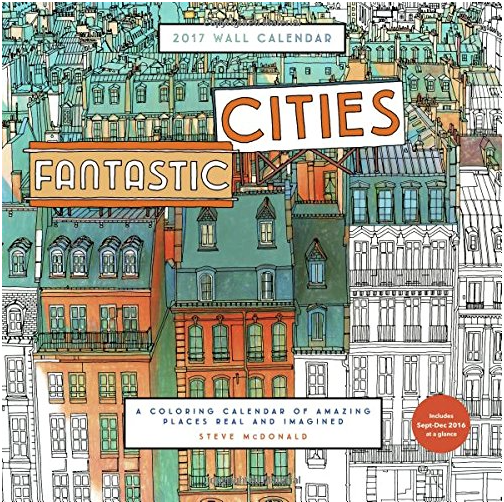
Blueline Botanica 2017 Mini Desk Pad Calendar ($6-$16)
Joanna Basford Coloring Desk Calendar ($17)
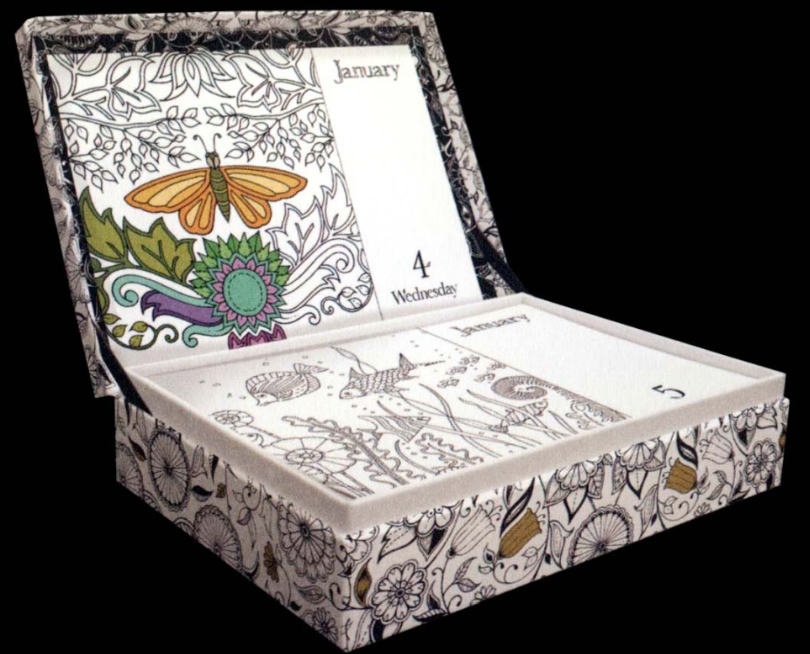 For fans of Johanna Basford, a superstar in the adult coloring realm, this 2017 calendar includes drawings from her Sea Garden, Enchanted Forest, and Lost Ocean coloring books, and comes with a keepsake box for storage. (Paper Doll‘s editorial note: Saved coloring pages easily become clutter, so do consider setting the box of colored pages free after the end of the year.)
For fans of Johanna Basford, a superstar in the adult coloring realm, this 2017 calendar includes drawings from her Sea Garden, Enchanted Forest, and Lost Ocean coloring books, and comes with a keepsake box for storage. (Paper Doll‘s editorial note: Saved coloring pages easily become clutter, so do consider setting the box of colored pages free after the end of the year.)
For more coloring calendars, check out Cleverpedia’s blog post, The Best Adult Coloring Calendars for 2017 for a gorgeous array of colorful planning options.
For more on how to pick the right calendar or planner for your needs, you might like to review Pick Your Planner 2015: Paper Doll Rounds Up the (Un)Usual Suspects.
Whatever calendars you use, whether paper or digital, Paper Doll believes that commitment to your system is the key to success. If coloring your appointment pages helps you keep your commitment, then, by all means, make your days colorful!
Pick Your Planner 2015: Paper Doll Rounds Up the (Un)Usual Suspects
On the cusp of a new year, it’s time to start entering important dates (birthdays, appointments, meetings, vacations, conferences, National Doughnut Day, etc.) into your planning system. Strictly speaking, a calendar is just a chart showing you the days, weeks and months. A planner is a tool for combining your calendar with your task list and other essential information to make your life more productive.
A few years ago, I offered up a less philosophical, more practical, discussion in Paper Doll Pencils You In On Her Calendar: 6 Tips for Planning 2011, with the most apt advice I could possibly give:
Surprised that people still use paper planners? Canadian professional organizer Clare Kumar explains five reasons why paper planners will never go away. Clare mentions the sensory aspects (you can see more at once, customize the look to appeal to your aesthetic preferences, and make your planner feel good), and notes that you can be grid-independent — the availability of electricity, internet and Wi-Fi are non-essential in the workings of a paper planner.
But it was Clare’s note about the nature of handwriting vs. typing that caught my attention. This year, we’ve discussed, at length, the research indicating that handwriting leads to greater learning and recall. Certainly the point of using a planner is that if you write something down, you can stop thinking of it, per se, and start thinking more robustly and contextually about it. Somehow, dragging an email into Outlook to set a meeting, or typing an appointment into your phone, leads to an out-of-sight, out-of-mind situation for many, but with a tangible paper planner, every time you eyeball your month or your week, you are speedily, comfortingly reminded of the important aspects your life.
Of course, knowing that you want a paper planner is only the beginning. You still have to know the style that’s right for you, and then there are a myriad number of options from which to choose.
RING-BOUND
While there have always been calendars, planners are a relative modern invention from the 1980’s onward. The Yuppies had their Filofaxes, DayRunners and Franklin Planners. (Disclosure: Paper Doll still uses a Franklin Planner: Classic size, Seasons theme, two-page-a-day version.)
Ring-bound planners have heft — it’s a binder, with pages for monthly, weekly and daily planning. That heft has always meant lots of options — you can pick-and-choose the elements of your planner — but your choices were generally confined to the binder size to which you’d already committed. I can switch to the Franklin Planner Monticello theme or the anniversary edition “Original” in a berry pink that matches the branding of my website, blog and business cards, but I still have to stick with the “Classic” sized planner unless I want to start from scratch.
I direct you to Ana Reinert of The Well-Appointed Desk and her recent six-part series, A Beginner’s Dive Into Ring-Bound Planners:
Ana may consider it a beginner’s dive, but by the time you reach the deep end, you’ll have explored all of the oceans of ring-bound planners.
BOOK-BOUND
Book-style planners require serious commitment. There’s generally no customizing, you have to start anew each year, and if your wealth of ideas (and scribblings) exceed the number of available pages, you’re out of luck. However, the features available in many of the modern book-style planners are creative as well as practical, making options possibly outweigh lack of expandability. Three recent alternatives worth considering include:
Evernote Weekly Planner by Moleskine
The Evernote Weekly Planner by Moleskine has a lot in common with its cousin, a notebook we discussed at length in An Organized Hybrid: The Evernote Smart Notebook By Moleskine. This 5″ x 8 1/4″, 144-page, dot-ruled planner is designed so that you can enter information by hand and use your iOS Evernote Camera app to snap a picture of a planner page, categorize the information (with the help of special, colorful “smart stickers” to tag your notes), and sync in Evernote, across all your devices. The hard cover binding has a custom Evernote design, and the interior rear cover has a paper pocket for storing loose items, like business cards or receipts.
Evernote is able to recognize your handwriting, so you can search within captured photos for specific text you’ve entered by hand. You can even check a box in the upper right corner of any particular date on a calendar page, and Evernote will flag that day as a reminder.
The Evernote Weekly Planner by Moleskine runs $34.95, and you get three months of free Evernote Premium included with the purchase.
Passion Planner bills itself as “An appointment calendar, goal setting guide, journal, sketchbook, gratitude log & personal and work to-do lists all in one notebook.“ Whew.
The black, book-bound, soft-cover binding comes in two sizes: 8 1/2″ x 11″ and 5 1/2″ x 8 1/2″. The Passion Planner has a traditional weekly layout, with seven columns for each day of the week, broken down by appointment slots, but fits in a lot of extra space for other areas of life.
But beyond this, of the Passion Planner’s 190 pages, there are annual and monthly overview calendars, a goal-setting guide to aid brainstorming for lifetime, 3-year, 1-year, and one-month goals, and monthly check-in “reflection questions” to gauge progress, consider gratitude and create steps for improvement. There are also 20 additional blank pages and gridded pages for free writing and drawing.
You can see the 2015 Passion Planner in action, page by page. This successful Kickstarter project can be purchased for $30-$40, depending on size, at the Passion Planner site.
Also, if you’re not ready to commit to the Passion Planner, itself, you can print some sample pages to use for free.
Spark Notebook, a Kickstarter project that raised ten times its initial goal, is almost the flip-side of the Passion Planner. If the latter is for right-brained, creative types, Spark Notebook is more for the linear, left-brained among us.
Instead of mind-maps, there are grids and lists, (undated) monthly and weekly goal, project planning and meeting notes pages, 30-day challenges, weekly overviews for time-blocking tasks, lined pages for note-taking, and even perforated blank pages for sharing notes with others. (Of course, this is where a snap with your phone would make more sense.)
You can click to peek inside the Spark Notebook and see page-by-page of how the 5 3/4″ x 8 1/4″ planner works. The planner is 216 acid-free pages with a lay-flat binding, and was priced at $28/each during the Kickstarter campaign.
WIRE-BOUND
Wire-bound planners generally use twin-loop wire binding and flexible covers, and are meant to be used for one calendar year and then replaced; any information that needs to be maintained must be hand-copied to the next year’s planner. However, they’re less expensive than binder alternatives and far more lightweight.
Beyond that, because wire-bound planners are minimally customizable, they sometimes have a reputation as tame and impersonal. Book-bound planners are often seen as elegant; ring-bound planners may be sophisticated or sassy, depending on customization. But wire-bound planners tend to remind most people of dentist-office receptionist’s calendars.
Of course, that needn’t be the case. Even when you’re talking about the grand-daddy of wire-bound paper planners, Mead’s At-A-Glance, precision doesn’t have to be boring:
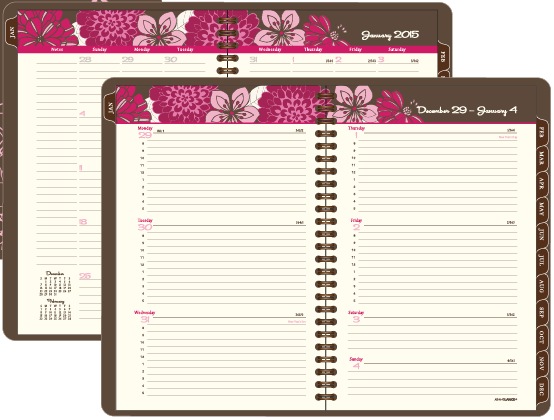 Of course, whether you’re looking at name-brand, store-brand or generic planners, the thing to note about most wire-bound planners is that they tend to be for planning appointments and fixed-date events, and less about setting goals, brainstorming projects or doing complex, long-range planning. One exception is the surprisingly little-known, but nonetheless fiercely loved, funnel-based Planner Pads, with space for categorizing project specifics, prioritizing daily activities and scheduling time- and date-specific appointments.
Of course, whether you’re looking at name-brand, store-brand or generic planners, the thing to note about most wire-bound planners is that they tend to be for planning appointments and fixed-date events, and less about setting goals, brainstorming projects or doing complex, long-range planning. One exception is the surprisingly little-known, but nonetheless fiercely loved, funnel-based Planner Pads, with space for categorizing project specifics, prioritizing daily activities and scheduling time- and date-specific appointments.
And, if your recollection of Planner Pads is that they are, like most wire-bound planners, fairly black-and-white (literally and figuratively), check out their recent upgrade to brightly colored, seasonal themed planners.
DO-IT-YOURSELF
Not everyone is satisfied with a single-universe planner. When I asked my Twitter followers, I was surprised to find how many people, like Unclutterer‘s Erin Doland, were creating their own planners, mixing and matching formats from different environments.
@ProfOrganizer Staples Arc and the Emergent Task Planner for my daily goal setting
— Erin Doland (@erdoland) December 11, 2014
Many DIY-ers like Erin are customizing notebooks to fit their unique needs and styles. Ring-bound planner users have a variety of free options available on the web, like PrintablePlanners.net‘s seven sizes of page additions (Executive, Desktop, Travel, Personal, Pocket, Hipster, Mini), with basic monthly, weekly, daily, project and task planning pages, as well as journals, spending logs, Cornell Note-taking pages, and more.
Lately, one of the more common way to adapt a planner is to use a customizable notebook, where you select the cover pieces, page elements and accessories, and join them together with discs that hold the specially-punched paper and elements together, or otherwise employ a unique binding system.
The high-end of the scale would be something like the Levenger Circa System, but we’ve also covered more affordable options in past posts, including:
- NAPO Expo 2012 Recap (Part 1) — Paper Lovers’ Dreams Come True (Staples’ Arc System)
- Customizable Notebooks: Have It Your Way…Sorta (YoonCo’s Sorta)
- Presto, Change-o! NAPO Expo 2013 Shape-shifting Organizing Products #3: Ampad Versa Crossover (Ampad Versa Crossover)
With the cover and binding options in place, you can choose in-system elements, like daily/weekly/monthly calendar pages, project planner refill pages, blank (lined or graph) paper, and so on. Alternatively, you might pick solutions from outside your planner’s universe. Erin, for example, uses the Emergent Task Planner from David Seah’s impressive array of productivity tools.
D*I*Y* Planner also has a huge compendium of template elements for use in ring-bound and disc-bound planners. You may also want to review MakeUseOf‘s recent article, 7 Single-Page Productivity Planners To Organize Your To-Do List for more planning element solutions to add to your calendar/planner. And, of course, any planner page or element created for one format can generally be used for the other with the help of a format-specific hole-punch.
YOUR IDEAL PLANNER
In the end, the best planner for you is the one you’ll pick up, carry with you, and use all the time, day-in and day-out. Only you know whether you need bright colors and mind-mapping pages or serious tones and refined lists. Leather, faux-leather or Hello Kitty pink plastic? Un-dated calendars and blank pages or dated calendars with pre-created themes and prompting language? One universe or a blending of many?
If you use a paper planner, feel free to share in the comments and let us know what works for you. And however you plan your 2015, may it be a happy and healthy one!

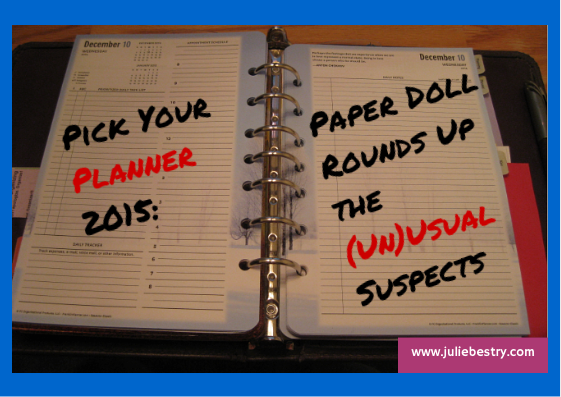
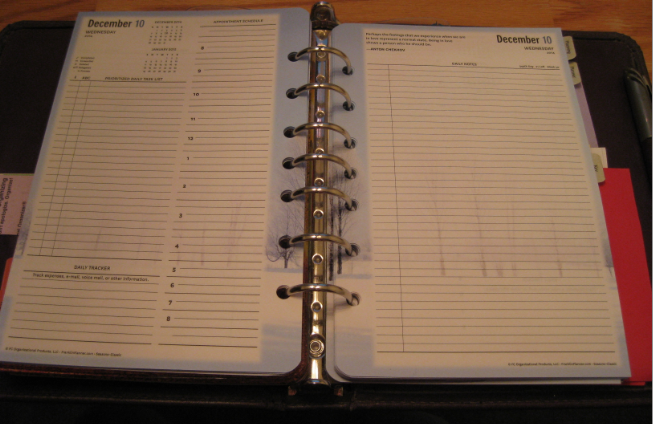
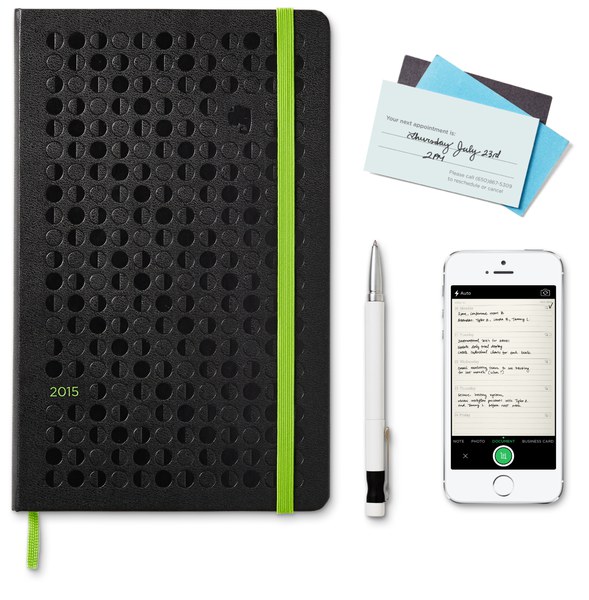

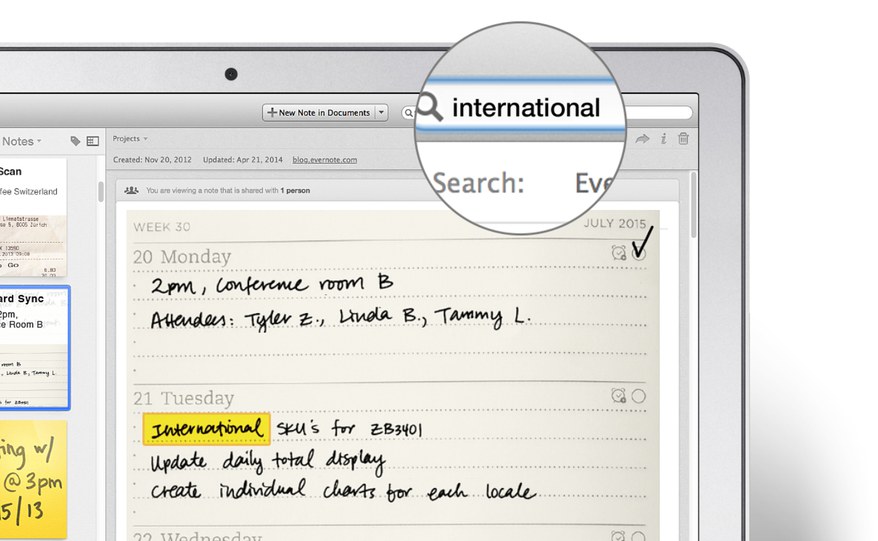
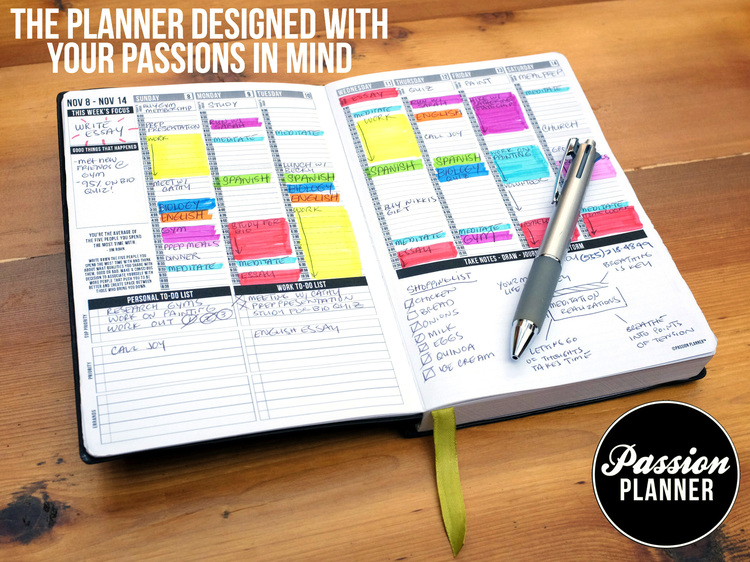
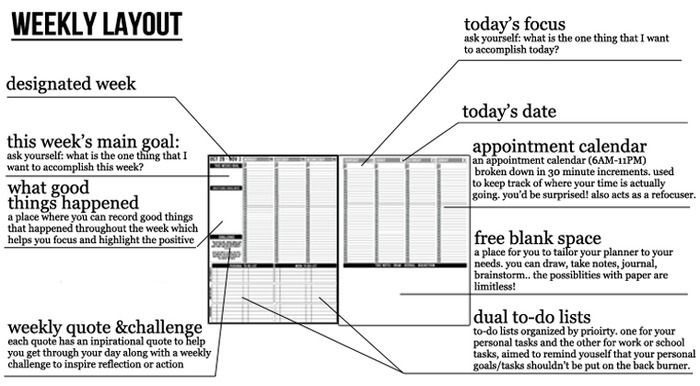
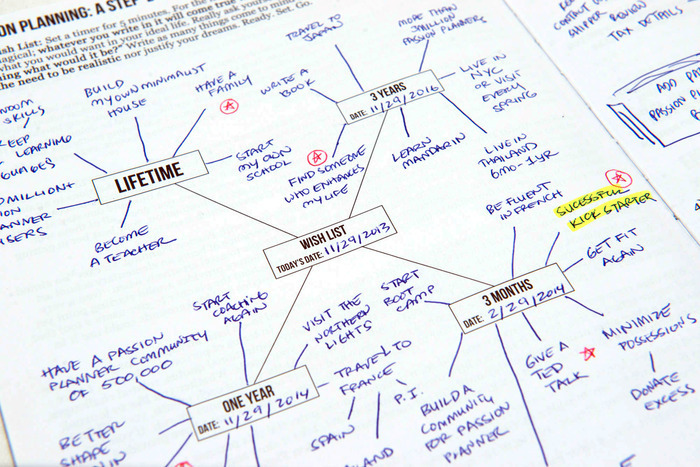
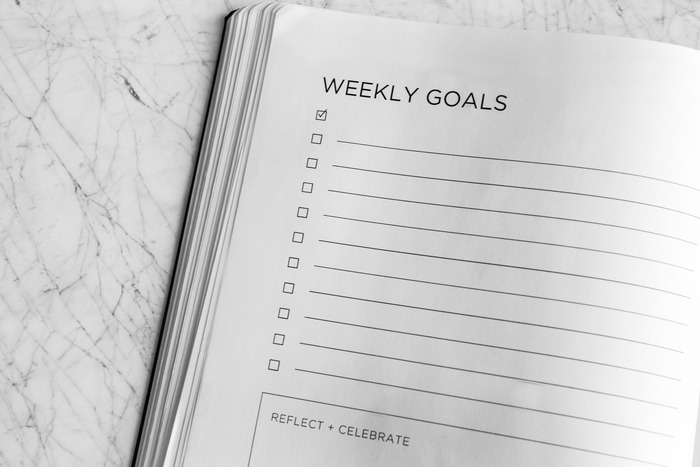

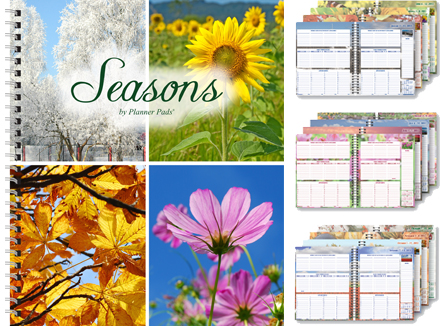
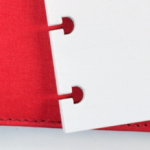

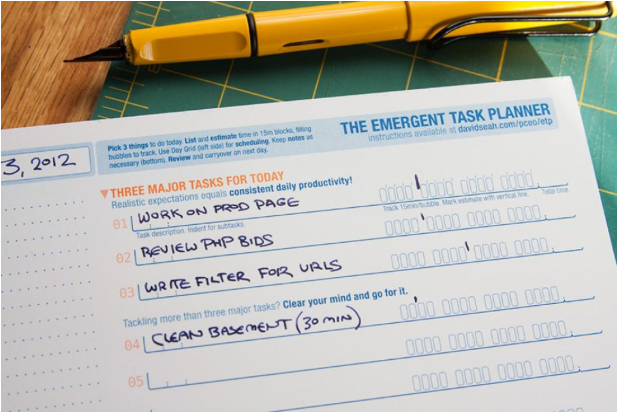



Follow Me